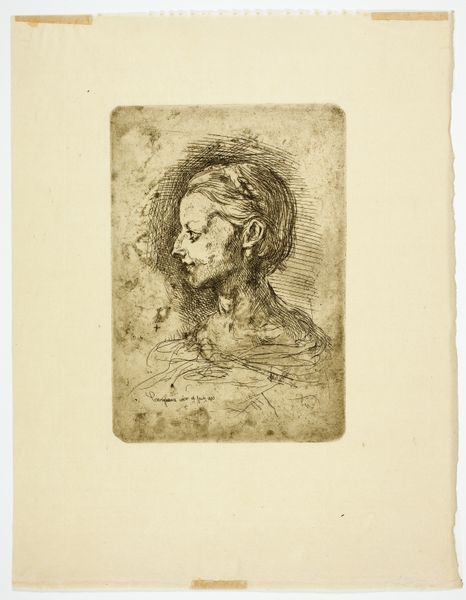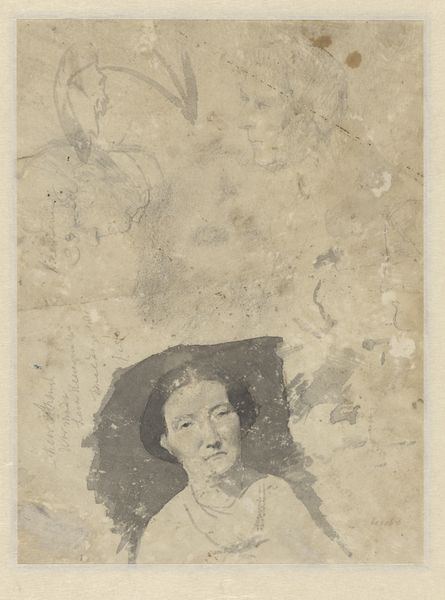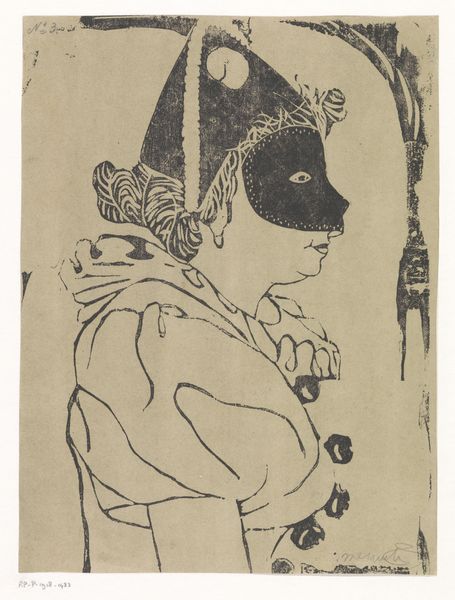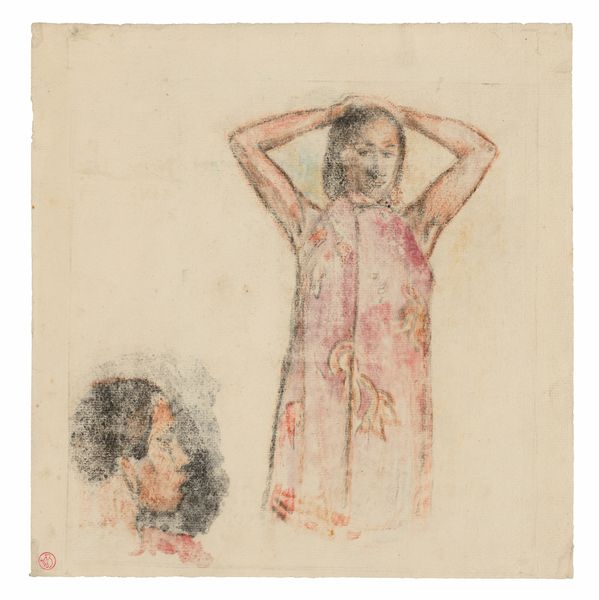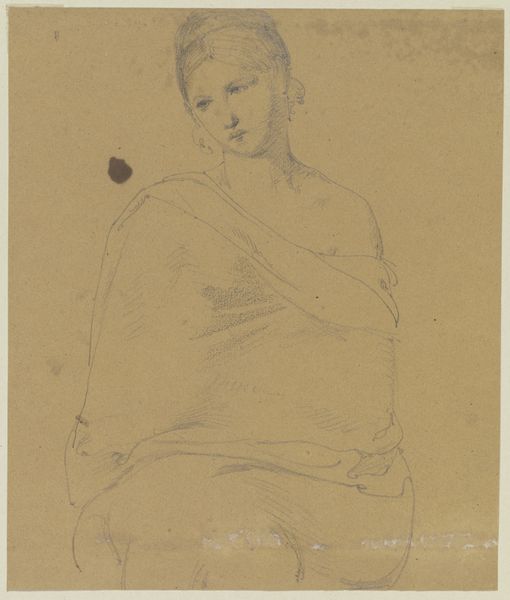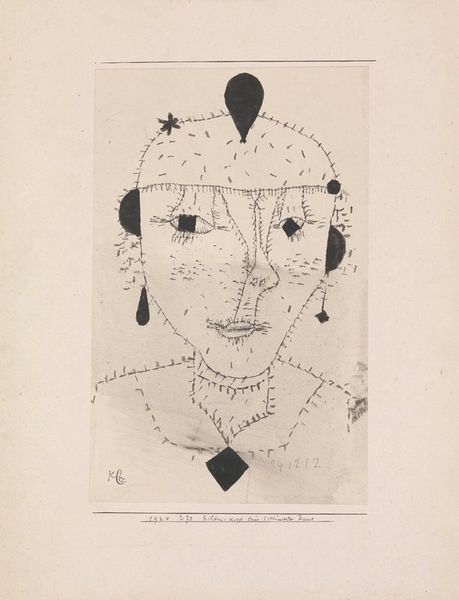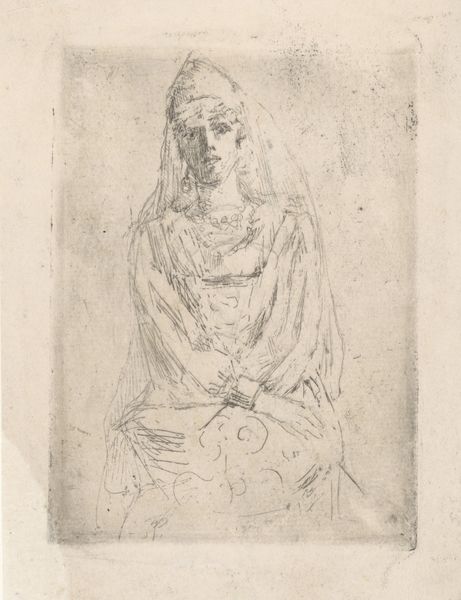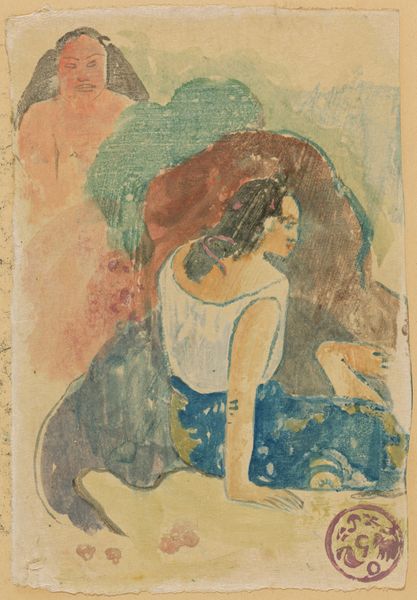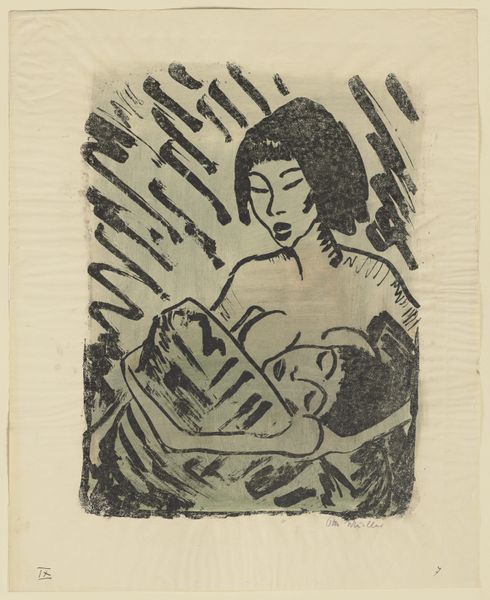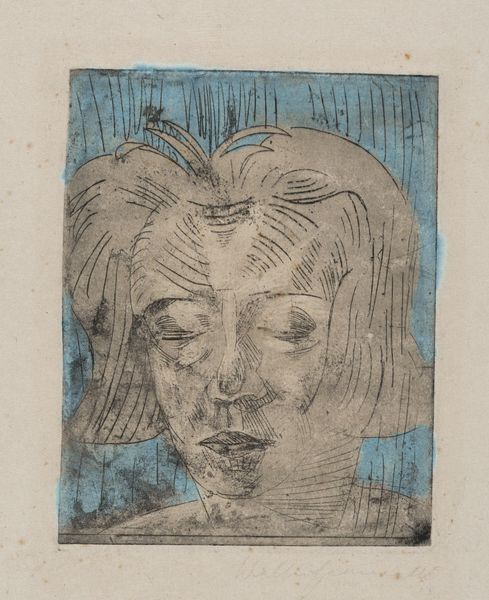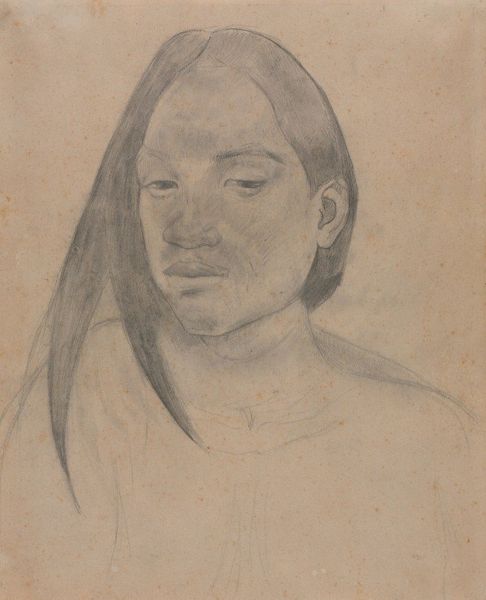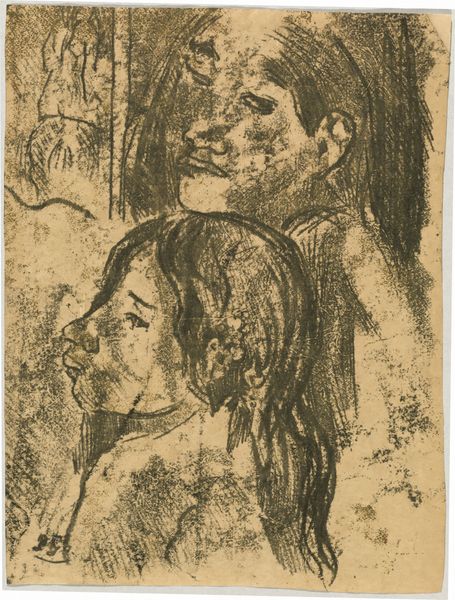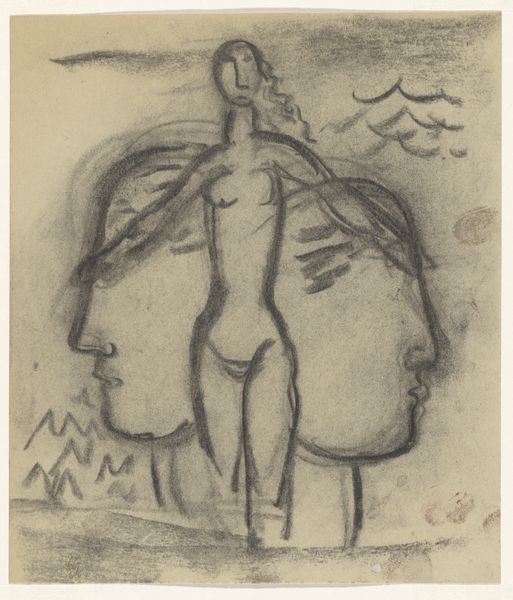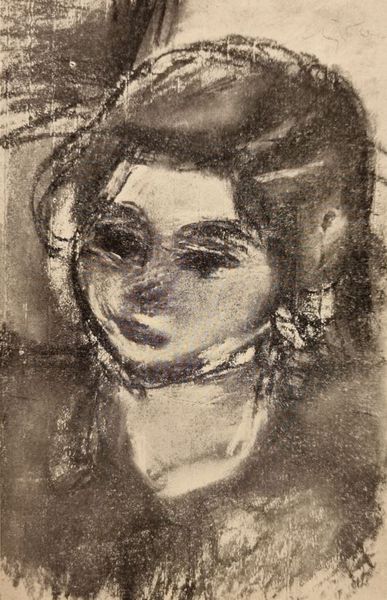
drawing, fibre-art
#
portrait
#
drawing
#
fibre-art
#
figuration
#
post-impressionism
#
nude
Copyright: Public Domain
Paul Gauguin created this etching, "Tahitian Woman with Evil Spirit," during his time in French Polynesia in the late 19th century. Here, Gauguin is engaging with the visual codes of ethnographic representation, popular at the time, but we should ask ourselves whose interests did this representation serve? The image presents a Tahitian woman alongside what Gauguin identifies as an "evil spirit," reflecting a Western fascination with, and often a misunderstanding of, non-Western spiritual beliefs. The institutional history here is that of colonialism, with the art market playing a significant role in shaping perceptions of colonized cultures. Gauguin, like many artists of his time, was drawn to non-Western cultures, but his interpretations were inevitably filtered through a Western lens. To understand this artwork fully, one should delve into colonial archives and studies of the art market to explore the complex social and cultural dynamics at play.
Comments
No comments
Be the first to comment and join the conversation on the ultimate creative platform.
